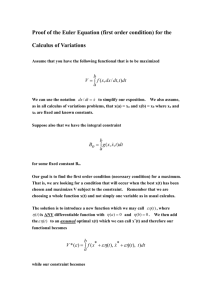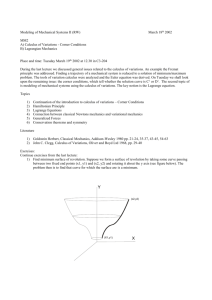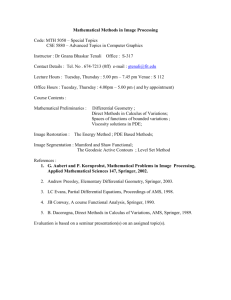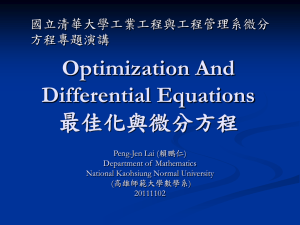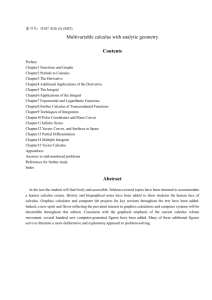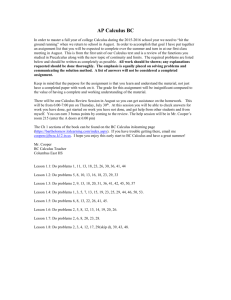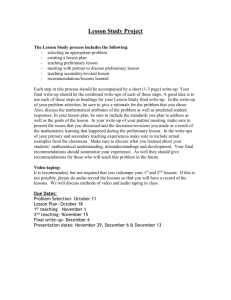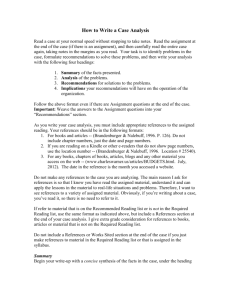MTH 5050 Mathematical Methods for Image processing II
advertisement
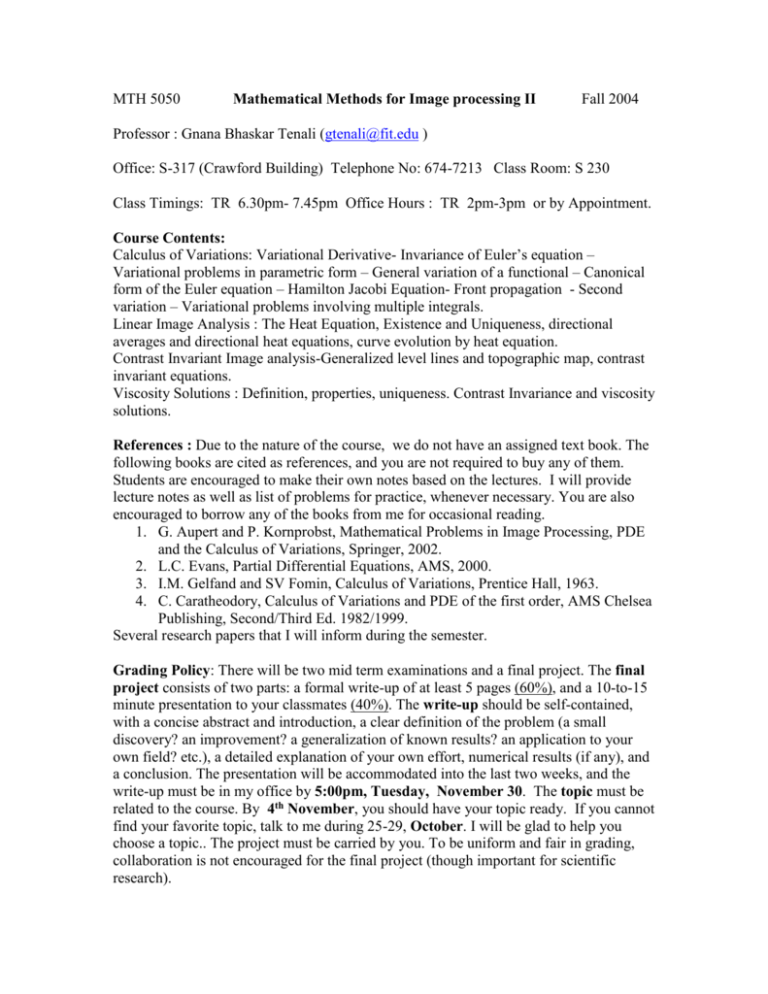
MTH 5050 Mathematical Methods for Image processing II Fall 2004 Professor : Gnana Bhaskar Tenali (gtenali@fit.edu ) Office: S-317 (Crawford Building) Telephone No: 674-7213 Class Room: S 230 Class Timings: TR 6.30pm- 7.45pm Office Hours : TR 2pm-3pm or by Appointment. Course Contents: Calculus of Variations: Variational Derivative- Invariance of Euler’s equation – Variational problems in parametric form – General variation of a functional – Canonical form of the Euler equation – Hamilton Jacobi Equation- Front propagation - Second variation – Variational problems involving multiple integrals. Linear Image Analysis : The Heat Equation, Existence and Uniqueness, directional averages and directional heat equations, curve evolution by heat equation. Contrast Invariant Image analysis-Generalized level lines and topographic map, contrast invariant equations. Viscosity Solutions : Definition, properties, uniqueness. Contrast Invariance and viscosity solutions. References : Due to the nature of the course, we do not have an assigned text book. The following books are cited as references, and you are not required to buy any of them. Students are encouraged to make their own notes based on the lectures. I will provide lecture notes as well as list of problems for practice, whenever necessary. You are also encouraged to borrow any of the books from me for occasional reading. 1. G. Aupert and P. Kornprobst, Mathematical Problems in Image Processing, PDE and the Calculus of Variations, Springer, 2002. 2. L.C. Evans, Partial Differential Equations, AMS, 2000. 3. I.M. Gelfand and SV Fomin, Calculus of Variations, Prentice Hall, 1963. 4. C. Caratheodory, Calculus of Variations and PDE of the first order, AMS Chelsea Publishing, Second/Third Ed. 1982/1999. Several research papers that I will inform during the semester. Grading Policy: There will be two mid term examinations and a final project. The final project consists of two parts: a formal write-up of at least 5 pages (60%), and a 10-to-15 minute presentation to your classmates (40%). The write-up should be self-contained, with a concise abstract and introduction, a clear definition of the problem (a small discovery? an improvement? a generalization of known results? an application to your own field? etc.), a detailed explanation of your own effort, numerical results (if any), and a conclusion. The presentation will be accommodated into the last two weeks, and the write-up must be in my office by 5:00pm, Tuesday, November 30. The topic must be related to the course. By 4th November, you should have your topic ready. If you cannot find your favorite topic, talk to me during 25-29, October. I will be glad to help you choose a topic.. The project must be carried by you. To be uniform and fair in grading, collaboration is not encouraged for the final project (though important for scientific research).

